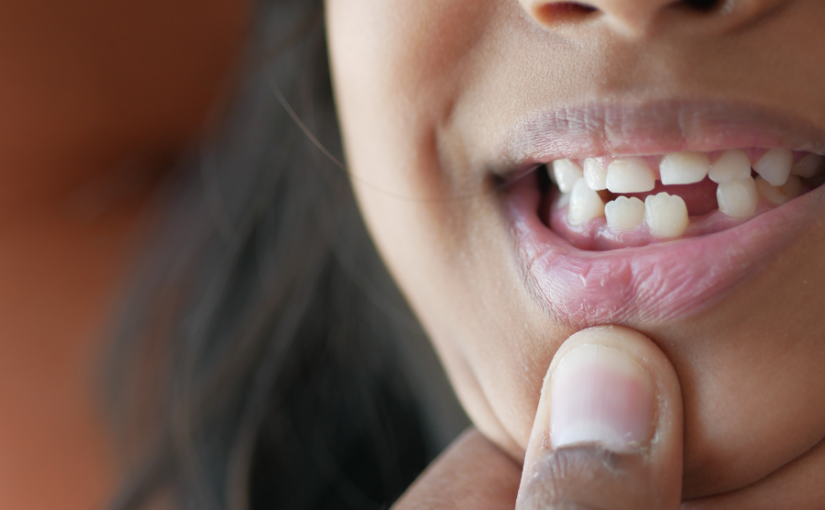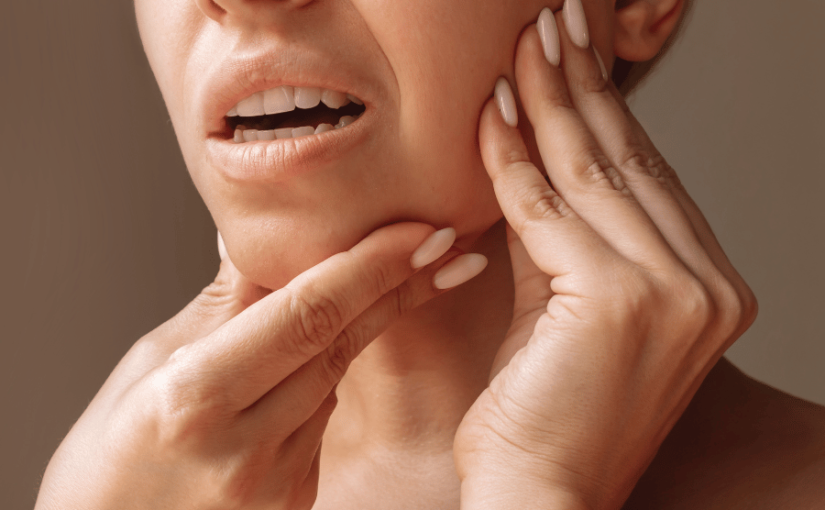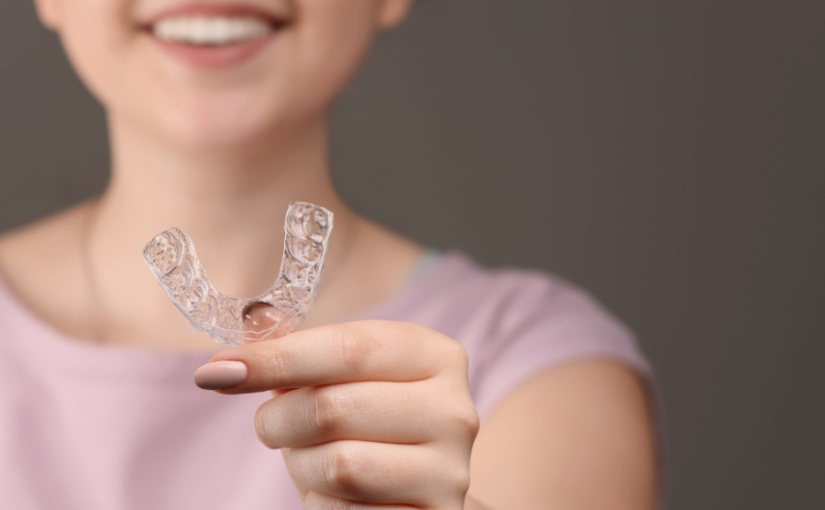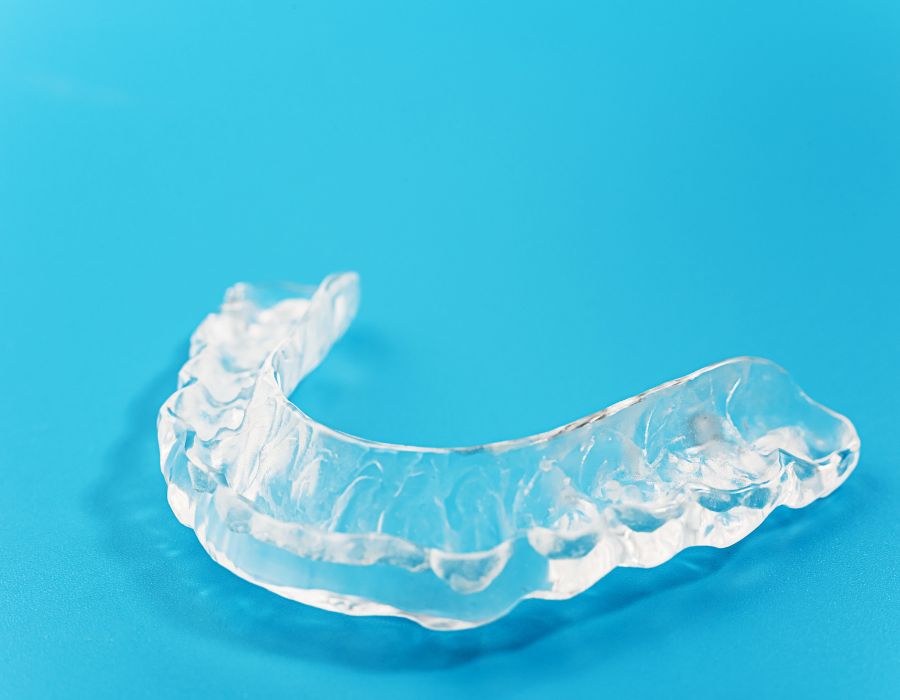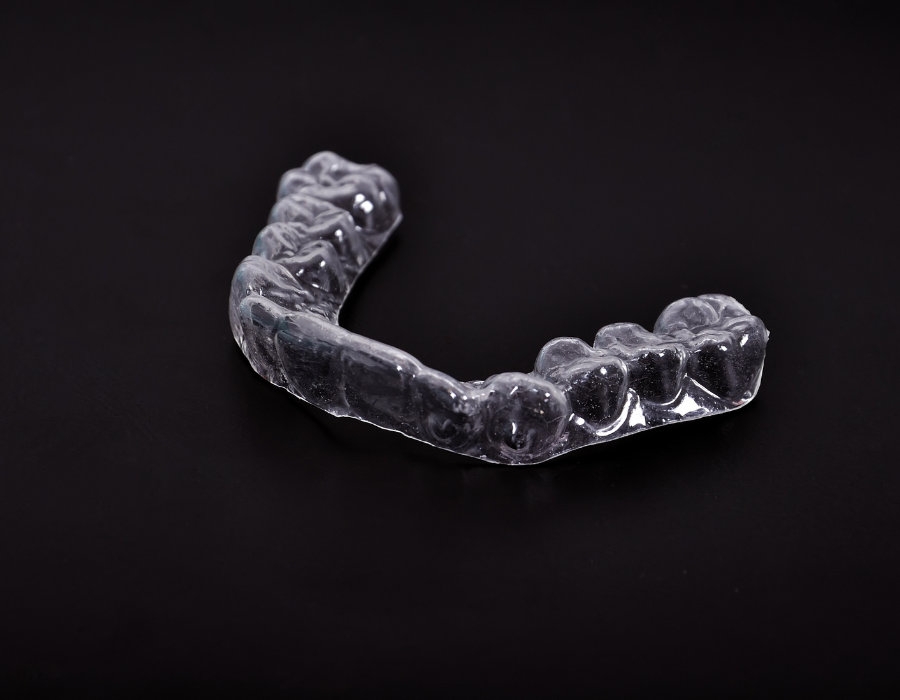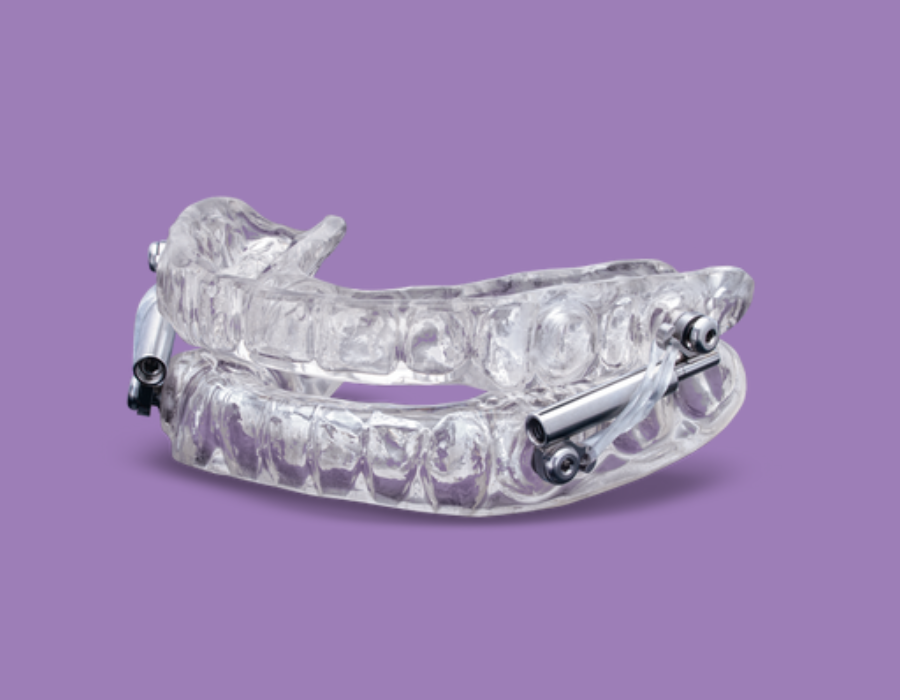By: Dr. Elizabeth Eggert
How did this start?
Mary Kay is a longtime patient of Dr. Elizabeth. She noted at her first appointment that she had “TMJ” and her right side was experiencing clicking and she was seeking therapy for the condition. TMJ disorders (or TMD) can manifest with different signs or symptoms for different people and encompass a wide variety of diagnoses. Typically, people with TMD experience pain in the jaw joint and/or in the muscles that control jaw movement. Dr. Elizabeth suspected that Mary Kay’s TMD could be related to how her teeth fit together and talked to Mary Kay about the benefits of orthodontics for her. Mary Kay wasn’t ready at that time, but after a few more sessions with Dr. Elizabeth and realizing that the cracking occurring on her teeth and the fact that she had already lost a few teeth at a relatively young age, Mary Kay did want to hear more.
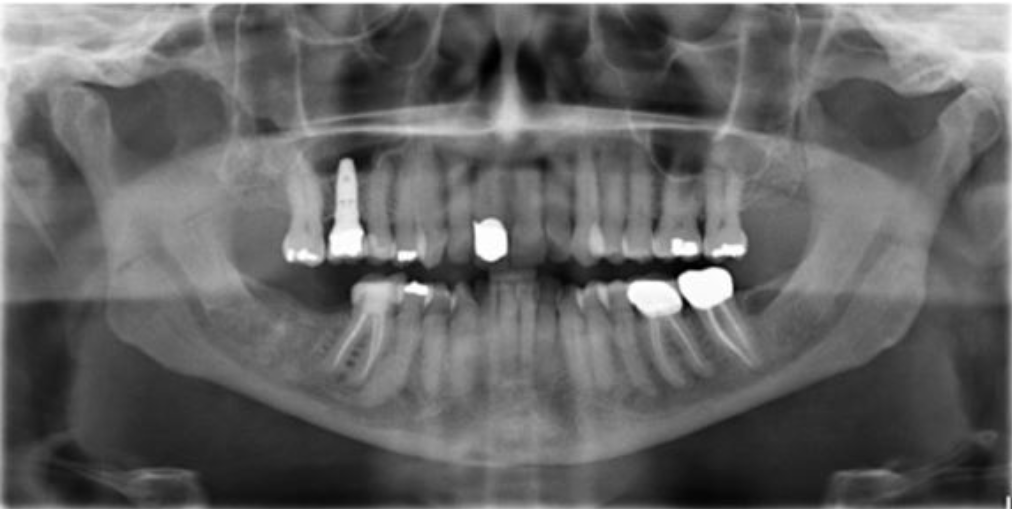
Mary Kay’s Panoramic Image 2021, note the implant and some missing teeth.
Mary Kay suffered for years with TMD. Her bite put uneven forces on the teeth, she had crowding, and when she went into her chewing movements, her back teeth hit very hard. Luckily, orthodontics can improve a number of the issues Mary Kay had. When Mary Kay was ready, she went for a consult with Dr. DeVoe of DeVoe Orthodontics. Dr. Elizabeth works closely with Dr. DeVoe and she had confidence that he could help improve Mary Kay’s bite and therefore, her TMD symptoms. During the course of treatment, Dr. DeVoe discussed options with Dr. Elizabeth for Mary Kay’s front two teeth. Originally, Mary Kay had one existing porcelain-fused-to-metal crown on her right central incisor. With the wear pattern Mary Kay had on her other teeth, this crowned tooth no longer matched its neighbor in either color or size and shape.

What was involved?
Mary Kay completed her orthodontics with Dr. DeVoe. Mary Kay noticed an improvement to her bite and her TMD symptoms did improve as well. Mary Kay was also lucky enough to address a deviated nasal septum with nasal surgery. This also helped improve her breathing and helped her sleep improve. Improvements in sleep always help underlying pain issues with not only TMD, but other chronic pain conditions. To fine tune the bite, Dr. DeVoe asked Dr. Elizabeth to complete equilibration for Mary Kay in order to sync her tooth bite with her jaw bite. This also helped solidify a better bite for Mary Kay.
For her front teeth, Dr. Elizabeth discussed options with Mary Kay. Mary Kay had many options, including doing nothing. She could also have chosen to bleach all her natural teeth and leave her existing crown as is. Dr. Elizabeth recommended, for best color match and to be most conservative, that Mary Kay bleach her natural teeth and then replace her crown on her right central and also complete a crown for her left central to gain symmetry in shape, color, and contour. Mary Kay underwent Zoom in-office bleaching and then her new crowns were completed.

What does Mary Kay think?
Before having the procedures done, Mary Kay was just hoping her teeth would look better when all the treatment was completed. She said that the process of braces hurt at first, but noted that she got used to it and it was less intense the longer she had the braces on. “All of the steps from braces to replacing the front teeth went very smoothly. I am very happy with the outcome. My teeth look much better.” Mary Kay would highly recommend to anyone considering treatment with Dr. Elizabeth to do so because all the steps Dr. Elizabeth works through creates a great outcome as everything comes together!
Mary Kay – we are so happy that you are pleased with your results, thank you for your commitment and the trust you put into the treatment as well! Congratulations on your new smile! We look forward to treating you and your friends and family for many years to come!











